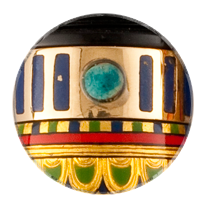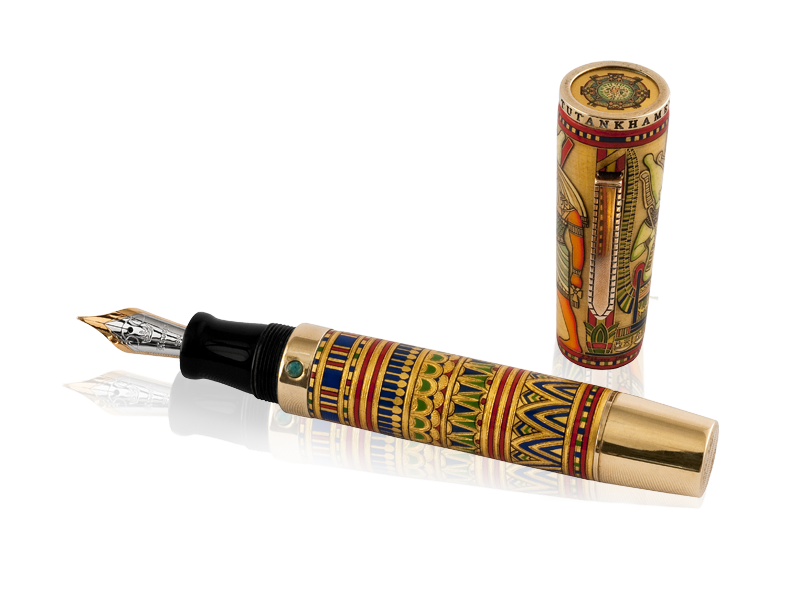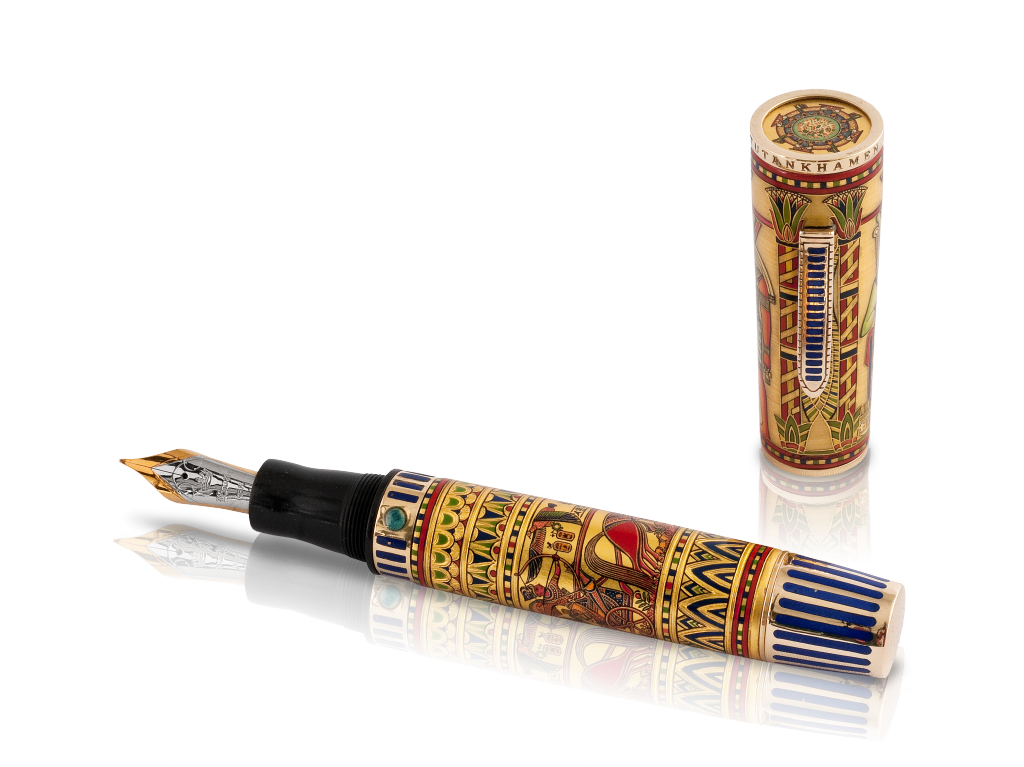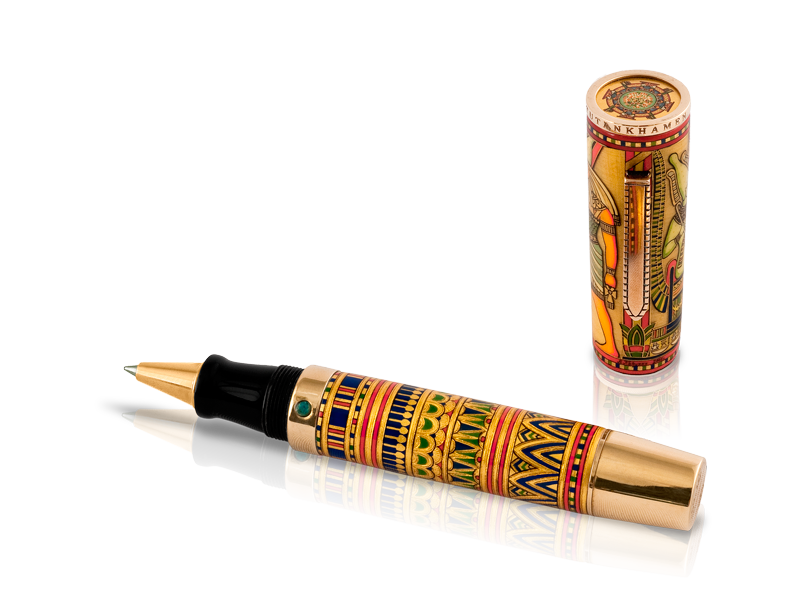Tutankhamen
Krone pays homage to Tutankhamen with this superb, handcrafted writing instrument.
The tapered cap is wrapped with genuine papyrus and then delicately painted with a regal scene of Tutankhamen seated upon his throne.
 At the top of the cap is a brass band inscribed with “Tutankhamen”, which frames an Egyptian Circular Zodiac. A bronze clip geometrically emulates the surrounding motif.
At the top of the cap is a brass band inscribed with “Tutankhamen”, which frames an Egyptian Circular Zodiac. A bronze clip geometrically emulates the surrounding motif.
The richly detailed barrel is painted with a meticulous Egyptian pattern, featuring royal, crimson, emerald and golden colors.
Centered within the band at the top of the barrel is one of the most interesting and unique artifacts from ancient Egypt, a piece of an Ushabti dating back to the Late Kingdom 26th Dynasty: 663-525 BC. Ushabti are carved figures, placed in a tomb, which protected the dead from perils in the afterlife.
A Limited Edition of 388 Fountain Pens and 38 Rollerballs worldwide. Also available is a magnum 18 piece edition with 14kt. Gold accents adorned with Lapis. Each Magnum pen is also accompanied by one actual Ushabti relic. Piston Fill. F, M and B.
| CONFECTIONING |
Krone pays homage to Tutankhamen with this superb, handcrafted writing instrument.
The tapered cap is wrapped with genuine papyrus and then delicately painted with a regal scene of Tutankhamen seated upon his throne.
 At the top of the cap is a brass band inscribed with “Tutankhamen”, which frames an Egyptian Circular Zodiac. A bronze clip geometrically emulates the surrounding motif.
At the top of the cap is a brass band inscribed with “Tutankhamen”, which frames an Egyptian Circular Zodiac. A bronze clip geometrically emulates the surrounding motif.
The richly detailed barrel is painted with a meticulous Egyptian pattern, featuring royal, crimson, emerald and golden colors.
Centered within the band at the top of the barrel is one of the most interesting and unique artifacts from ancient Egypt, a piece of an Ushabti dating back to the Late Kingdom 26th Dynasty: 663-525 BC. Ushabti are carved figures, placed in a tomb, which protected the dead from perils in the afterlife.
A Limited Edition of 388 Fountain Pens and 38 Rollerballs worldwide. Also available is a magnum 18 piece edition with 14kt. Gold accents adorned with Lapis. Each Magnum pen is also accompanied by one actual Ushabti relic.
Piston Fill. F, M and B.
| CONFECTIONING |
Krone pays homage to Tutankhamen with this superb, handcrafted writing instrument.
The tapered cap is wrapped with genuine papyrus and then delicately painted with a regal scene of Tutankhamen seated upon his throne.
 At the top of the cap is a brass band inscribed with “Tutankhamen”, which frames an Egyptian Circular Zodiac. A bronze clip geometrically emulates the surrounding motif.
At the top of the cap is a brass band inscribed with “Tutankhamen”, which frames an Egyptian Circular Zodiac. A bronze clip geometrically emulates the surrounding motif.
The richly detailed barrel is painted with a meticulous Egyptian pattern, featuring royal, crimson, emerald and golden colors.
Centered within the band at the top of the barrel is one of the most interesting and unique artifacts from ancient Egypt, a piece of an
Ushabti dating back to the Late Kingdom 26th Dynasty: 663-525 BC. Ushabti are carved figures, placed in a tomb, which protected the dead from perils in the afterlife.
A Limited Edition of 388 Fountain Pens and 38 Rollerballs worldwide. Also available is a magnum 18 piece edition with 14kt. Gold accents adorned with Lapis. Each Magnum pen is also accompanied by one actual Ushabti relic. Piston Fill. F, M and B.
| CONFECTIONING |



